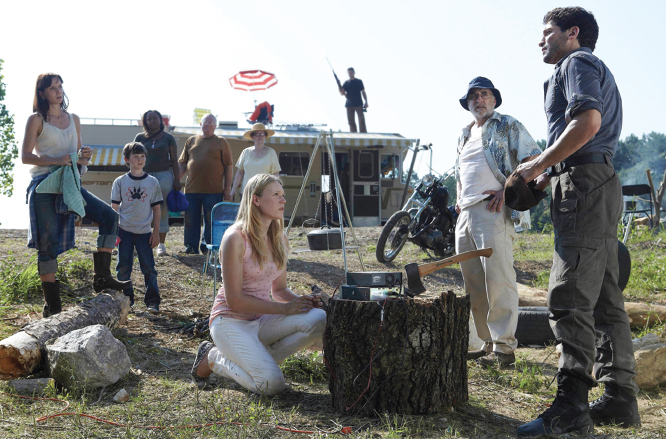Communication Climate
The differences among communication climates are often related to language and nonverbal communication (Chapters 3 and 4). In addressing conflict with a friend, you might use few words and avoid eye contact (uncertain climate), raise your voice or speak sarcastically (defensive climate), or offer reassuring touch and speak with a firm but understanding tone (supportive climate).
Another factor that affects how we handle conflict is the communication climate (Gibb, 1961)—the general “atmosphere” surrounding how we feel about our communication in different relationships.
What types of climate might you face when engaging in conflict with others? We suggest three possibilities: uncertain, defensive, and supportive. The AMC television series The Walking Dead illustrates the ways different climates can affect conflict management.
- Uncertain climates are those in which at least one of the people involved is unclear, vague, tentative, and awkward about the goals, expectations, and potential outcomes of the conflict situation. Many conditions can create uncertain climates, including unfamiliarity with the people, the surroundings, or the topic at hand. In uncertain climates, communicators are hesitant to take action, and conflict management can bog down. On The Walking Dead, small groups of survivors band together in order to survive. Clearly there are innumerable uncertainties in this postapocalyptic world: How will Sheriff Rich Grimes and his people keep out the “walkers”? How will they obtain necessary supplies? And how far are they willing to go to defend their group from others competing for resources like food, weapons, and shelter? This confusion is compounded by the overwhelming fear and hesitation of many of the individual characters who struggle to decide a clear course of action.
- Defensive climates are those in which the people involved feel threatened. It is an atmosphere of mistrust, suspicion, and apprehension, leading to efforts to control and manipulate others (Forward, Czech, & Lee, 2011). On The Walking Dead, survivors in the Grimes camp are always on the defensive: every moment is fraught with anxiety, not only about the zombies who wander up to the gates of their prison camp daily but also about competing groups seeking to overtake them, as well natural threats and concerns like illness and hunger.
- Supportive climates involve communicators who are open to one another’s ideas and feelings. Such climates involve neutral (rather than blame-
filled) descriptions of the conflict situation and allow communicators to develop trust and cooperation toward a productive resolution of problems (Forward, Czech, & Lee, 2011). On The Walking Dead, supportive climates are hard to find. But individuals— friends, spouses, siblings, and even strangers— do work to manage problems among themselves. When Rich worries that he is failing as a leader and a father, he hangs up his holster to take time to focus on being a father to his son and new baby daughter. Although others in the group want him to step back into his leadership role, they allow him the time to mourn the death of his wife Lori, to repair his relationship with his son Carl, and to bond with his new baby daughter. But when the camp is threatened, they make it clear that he needs to step up as a leader and a defender once again.

How do you move from a defensive or uncertain climate to a supportive one? Your first task is to make sure you know which climate you are experiencing. Your gut instincts can be a credible guide here, but you can also make some formal assessment of the climate situation. What are your past experiences with this topic, this person or group, and these conditions? How did your own communication contribute to the situation? Once you know the climate you are in, you can take steps to move toward a supportive climate. Figure 8.1 offers several communication steps to help you find your way to supportive conflict climates.
